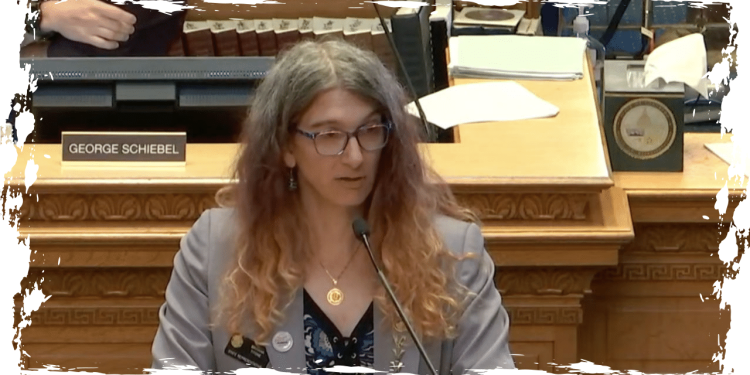According to a recent law passed in Colorado, public schools are mandated to offer menstrual hygiene products free of cost to students in all relevant bathrooms by 2028.
House Bill 24-1164 declares that it’s “necessary to ensure that all students who menstruate have access to menstrual products in order to promote the health, dignity, and education equality of all students.” The bill was sponsored by Rep. Brianna Titone, D-Jefferson, a transgender woman, along with three other women: Rep. Jenny Willford, D-Adams, Sens. Janet Buckner, D-Arapahoe, and Faith Winter, D-Adams. The House passed the bill 44-18, and the Senate approved it 27-8.
The measure defines an “applicable student bathroom” as a female-designated or gender-neutral restroom in a school building that is available to menstruating students in grades six through twelve. Products are defined as “at a minimum, tampons and menstrual pads.”
Beginning on or before June 30, 2025, all schools must provide free menstruation products in at least 25% of “applicable student bathrooms in all applicable school buildings.” The ratio rises to 50% in 2026, 75% in 2027, and all bathrooms in 2028.
The bill’s fiscal note noted that it will raise costs for school systems to deliver the products, with an estimated annual cost of 20 cents to $5 per pupil.
The bill mandates small rural school districts and charter schools within small rural school districts to meet the 2028 deadline, but exempts them from the phase-in period.
For students in kindergarten through sixth grade, the items are available at a health or administrative office in school facilities.
The bill also extends the 2021 statute that established the Colorado Department of Education’s Menstrual Hygiene Product Accessibility Grant Program. Senate Bill 21-255 authorized funding for the projects if 50% of a school’s students qualified for free or reduced-price lunches. The Department of Education is required to distribute subsidies in proportion to the number of students and bathrooms in each school. The budgetary note for this year’s legislation said that 35 schools got cash last year, with payments ranging from $1,000 to $5,000.
The Department of Education requires schools to submit an annual report detailing the use of the funding.
This year’s statute increases grant program participation in rural and small rural school districts, as well as charter schools inside those districts. It also raised funding for the Department of Education from $100,000 to $200,000. The Department of Education may spend no more than 10% of its budget on administrative costs.










